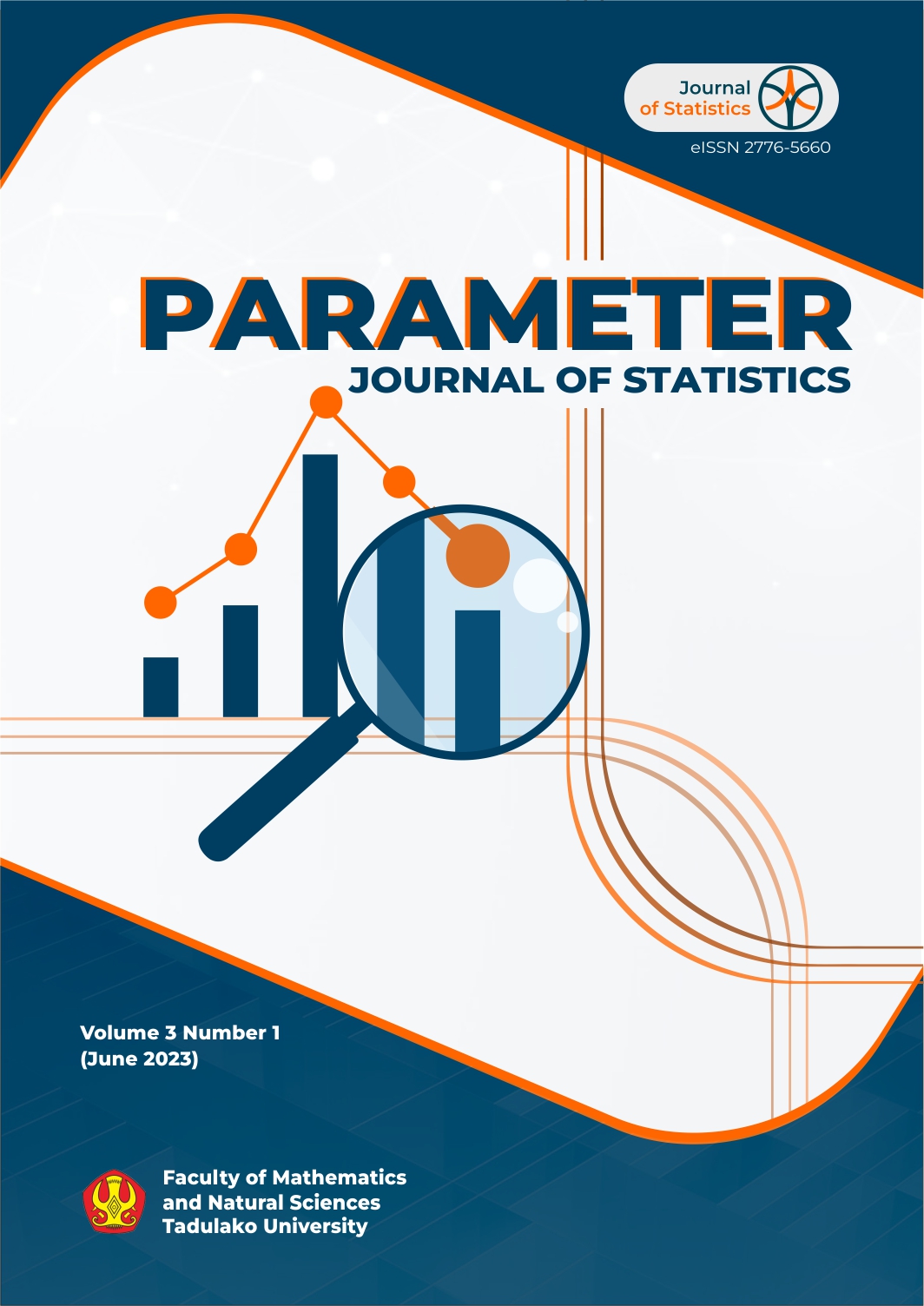Main Article Content
Abstract
One form of evaluation of student learning outcomes is the Final Semester Examination. This exam is designed to measure the extent of achievement of educational objectives. A good evaluation must meet several criteria, including good item validity and reliability, a variety of difficulty levels, and the power of differentiation. This study aims to describe the results of a comparative analysis of the quality of measurement instruments in the form of multiple-choice questions using the classical test theory approach and the Rasch model in terms of validity, reliability, difficulty level, and question differentiation. Data were obtained through a website that presents multiple choice exam results of grade XI students at SMA Negeri 3 Gorontalo, consisting of 26 female students and 10 male students. The results showed that in the instrument validity analysis, the Rasch model showed more valid items with a determination category of 0.4 < pt measure corr < 0.8. This means that the Rasch model provides a better analysis compared to the classical test theory analysis. In the reliability analysis, the reliability value of items in the Rasch model is higher but in almost the same category. In analyzing the difficulty level of the instrument, the classical test theory approach shows that the items are in the easy, medium, and difficult categories, so they are still considered capable of measuring students' abilities. However, in the Rasch model, items are only in the very easy, difficult, and extremely difficult categories. In analyzing the power of differentiation, the classical test theory method and the Rasch model have not provided good enough results to identify respondents in several groups based on their level of understanding
Keywords
Article Details

This work is licensed under a Creative Commons Attribution-ShareAlike 4.0 International License.
References
- Arikunto, S. (2011). Penilaian dan penelitian bidang bimbingan dan konseling. Yogyakarta: Aditya Media.
- Azwar, A., & Prihartono, J. (2003). Metodologi penelitian kedokteran dan kesehatan masyarakat. Batam: Binarupa Akara.
- Bagiyono, B. (2017). Analisis Tingkat Kesukaran dan Daya Pembeda Butir Soal Ujian Pelatihan Radiografi Tingkat 1. Widyanuklida, 16(1).
- Grossman, R. I., Lenkinski, R. E., Ramer, K. N., Gonzalez-Scarano, F., & Cohen, J. A. (1992). MR proton spectroscopy in multiple sclerosis. American journal of neuroradiology, 13(6), 1535-1543.
- Hasan, Iqbal. (2001). Pokok-Pokok Materi Statistik 1 (Statistik Deskriptif). Jakarta : PT Bumi Aksara.
- Iskandar, A., & Rizal, M. (2018). Analisis kualitas soal di perguruan tinggi berbasis aplikasi TAP. Jurnal Penelitian Dan Evaluasi Pendidikan, 22(1), 12-23.
- Kartowagiran, B. (2009, November). Penyusunan Instrumen Kinerja SMK-SBI. In Makalah dalam Workshop Evaluasi Kinerja SMK-SBI P4TK Matematika.
- Lestari, K. E., & Yudhanegara, M. R. (2017). Analisis kemampuan representasi matematis mahasiswa pada mata kuliah geometri transformasi berdasarkan latar belakang pendidikan menengah. Jurnal Matematika Integratif, 13(1), 28-33.
- Perdana, S. A. (2018). Analisis kualitas instrumen pengukuran pemahaman konsep persamaan kuadrat melalui teori tes klasik dan rasch model. Jurnal Kiprah, 6(1), 41-48.
- Retnawati, H. (2016). Analisis kuantitatif instrumen penelitian (panduan peneliti, mahasiswa, dan psikometrian). Parama publishing.
- Sarea, M. S., & Ruslan, R. (2019). Karakteristik Butir Soal: Classical Test Theory Vs Item Response Theory?. Didaktika: Jurnal Kependidikan, 13(1), 1-16.
- Sumintono, B., & Widhiarso, W. (2014). Aplikasi model Rasch untuk penelitian ilmu-ilmu sosial (edisi revisi). Trim Komunikata Publishing House.
- Sumintono, B., & Widhiarso, W. (2015). Aplikasi pemodelan rasch pada assessment pendidikan. Trim komunikata.
- Susdelina, P. SA, & Febrian.(2018). Analisis kualitas instrumen pengukuran pemahaman konsep persamaan kuadrat melalui teori tes klasik dan rasch model. Jurnal Kiprah, 6(1), 41-48.
- Syofian, S., Setiyaningsih, T., & Syamsiah, N. (2015). Otomatisasi metode penelitian skala likert berbasis web. Prosiding Semnastek.
- Wahyuningsih, T., & Rosyid, R. (2015). Faktor yang Mempengaruhi Kesulitan Belajar Siswa pada Mata Diklat Siklus Akuntansi Kelas XI di Smk. Jurnal Pendidikan dan Pembelajaran Khatulistiwa (JPPK), 4(9).
- Wijono, S., & Mardapi, D. (2016). Model evaluasi ujian nasional kompetensi keahlian teknik pemesinan SMK. Jurnal Penelitian dan Evaluasi Pendidikan, 20(2), 234-243.
- Yasin, M., Rajendran, J. J., Sinanoglu, O., & Karri, R. (2015). On improving the security of logic locking. IEEE Transactions on Computer-Aided Design of Integrated Circuits and Systems, 35(9), 1411-1424.
- Yusuf, I., Widyaningsih, S. W., & Sebayang, S. R. B. (2018). Implementation of e-learning based-STEM on quantum physics subject to student HOTS ability.
